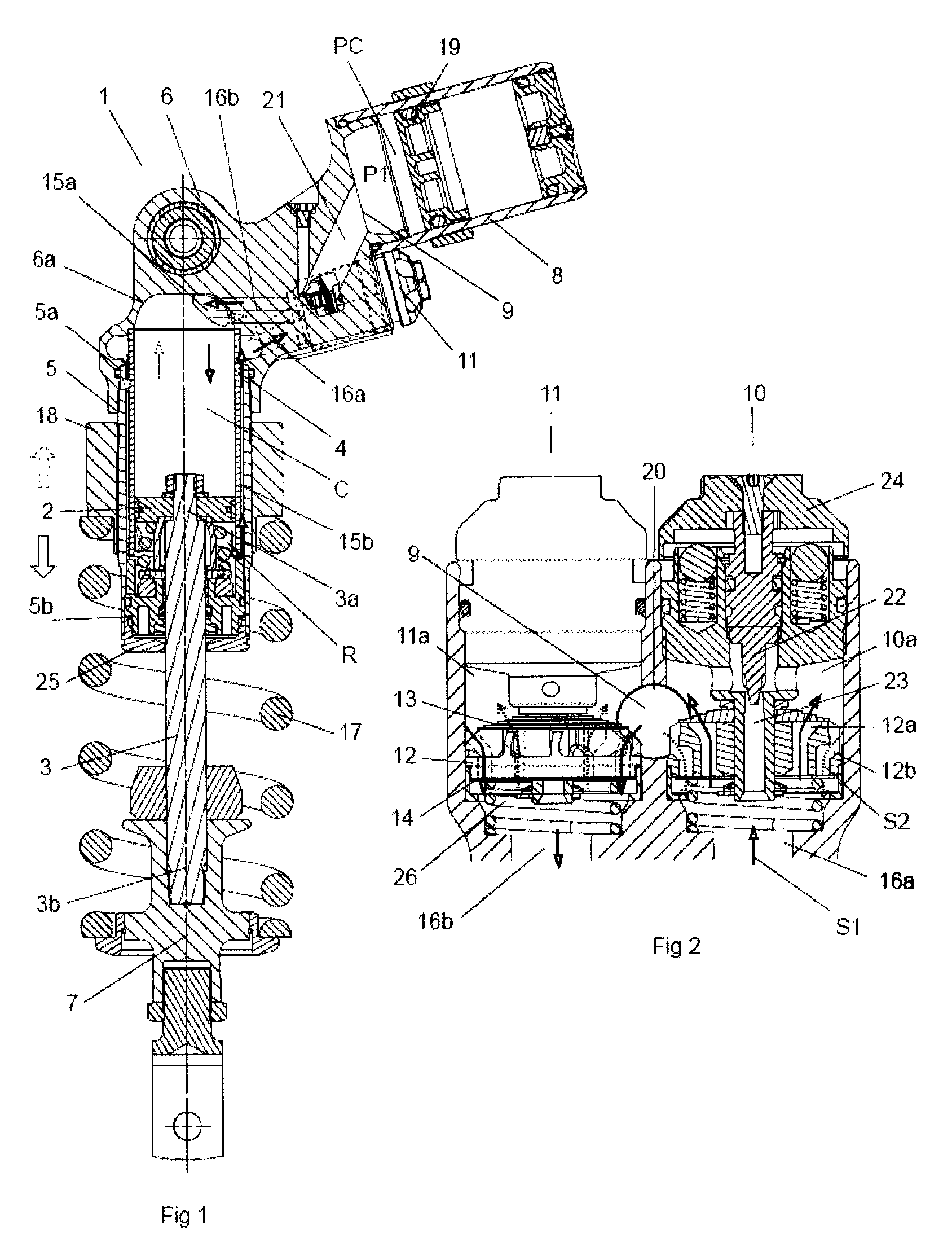Shock absorber with hydraulic flow ducts
a technology of hydraulic flow ducts and shock absorbers, which is applied in the direction of vibration dampers, springs/dampers, springs, etc., can solve the problems of long overall length of dampers, difficult to fully control the pressure balance, and the ttx principle in this type of dampers
- Summary
- Abstract
- Description
- Claims
- Application Information
AI Technical Summary
Benefits of technology
Problems solved by technology
Method used
Image
Examples
Embodiment Construction
[0032]FIG. 1 shows a hydraulic shock absorber 1, which comprises a solid main piston 2 fixed to an upper part of a piston rod 3 and designed to slide in a damping cylinder 4. The term solid piston head implies that the piston does not allow any damping medium to pass through but is intended to compress or push in front of it all the damping medium on which the area of the piston acts during a movement. The damping cylinder 4 is defined by the main piston 2 in a first damping chamber R, containing the piston rod 3 and a second damping chamber C which does not contain the piston rod 3. Arranged around the damping cylinder 4 is an outer tube 5 having a diameter greater than the damping cylinder so that a gap is created between damping cylinder 4 and the outer tube 5. The outer tube 5 is defined at its first end 5a by a first fixing element 6 having an inner surface 6a, which adjoins the second damping cylinder C, and at its other end 5b by a sealing assembly 25. A second fixing element...
PUM
 Login to View More
Login to View More Abstract
Description
Claims
Application Information
 Login to View More
Login to View More - R&D
- Intellectual Property
- Life Sciences
- Materials
- Tech Scout
- Unparalleled Data Quality
- Higher Quality Content
- 60% Fewer Hallucinations
Browse by: Latest US Patents, China's latest patents, Technical Efficacy Thesaurus, Application Domain, Technology Topic, Popular Technical Reports.
© 2025 PatSnap. All rights reserved.Legal|Privacy policy|Modern Slavery Act Transparency Statement|Sitemap|About US| Contact US: help@patsnap.com



